Disclaimer: In exchange for a meal at the Four Seasons Shenzhen restaurant Zhuo Yue Xuan, I am writing this review.
Located in Futian, the primary CBD (central business district) of Shenzhen, the nearly 11-years old Four Seasons hotel in Shenzhen is located close to the district’s largest convention center, metro stations, and even a high-speed railway station. As I had a few hours between waking up in Guangzhou and my flight out of Hong Kong, the convenience of the high-speed rail station (called Futian) made Zhuo Yue Xuan an easy choice.
Zhuo Yue Xuan, the premier Four Seasons Shenzhen restaurant specializing in Cantonese cuisine, is on the hotel’s third floor. It is open from 10:30 to 14:30 on weekends, 11:30 to 14:30 on weekdays, and daily for dinner from 17:30 to 22:30.
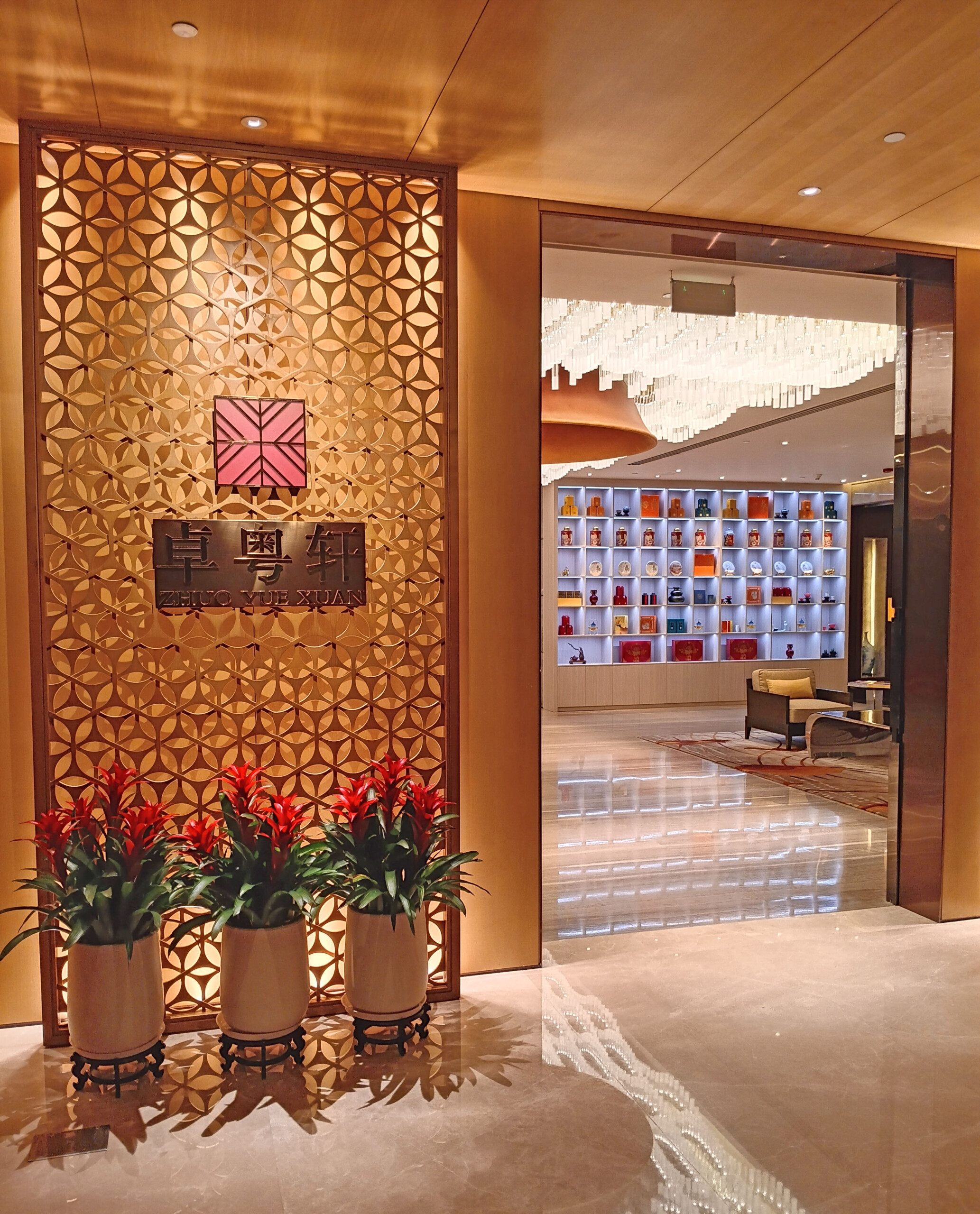
My first impression of Zhuo Yue Xuan is that it was clean, welcoming, and busy. Not a huge restaurant, but if you know a bit about Cantonese restaurants, you will instantly recognize the big round tables with rotating discs (aka lazy susans) in the center of them. In other words, each table could fit a fair number of patrons, even if there weren’t that many total tables. Additionally, there are 10 private rooms.
Since the restaurant was busy, I didn’t want to bother other guests with photos. Thus, the following two pictures are from my colleague:
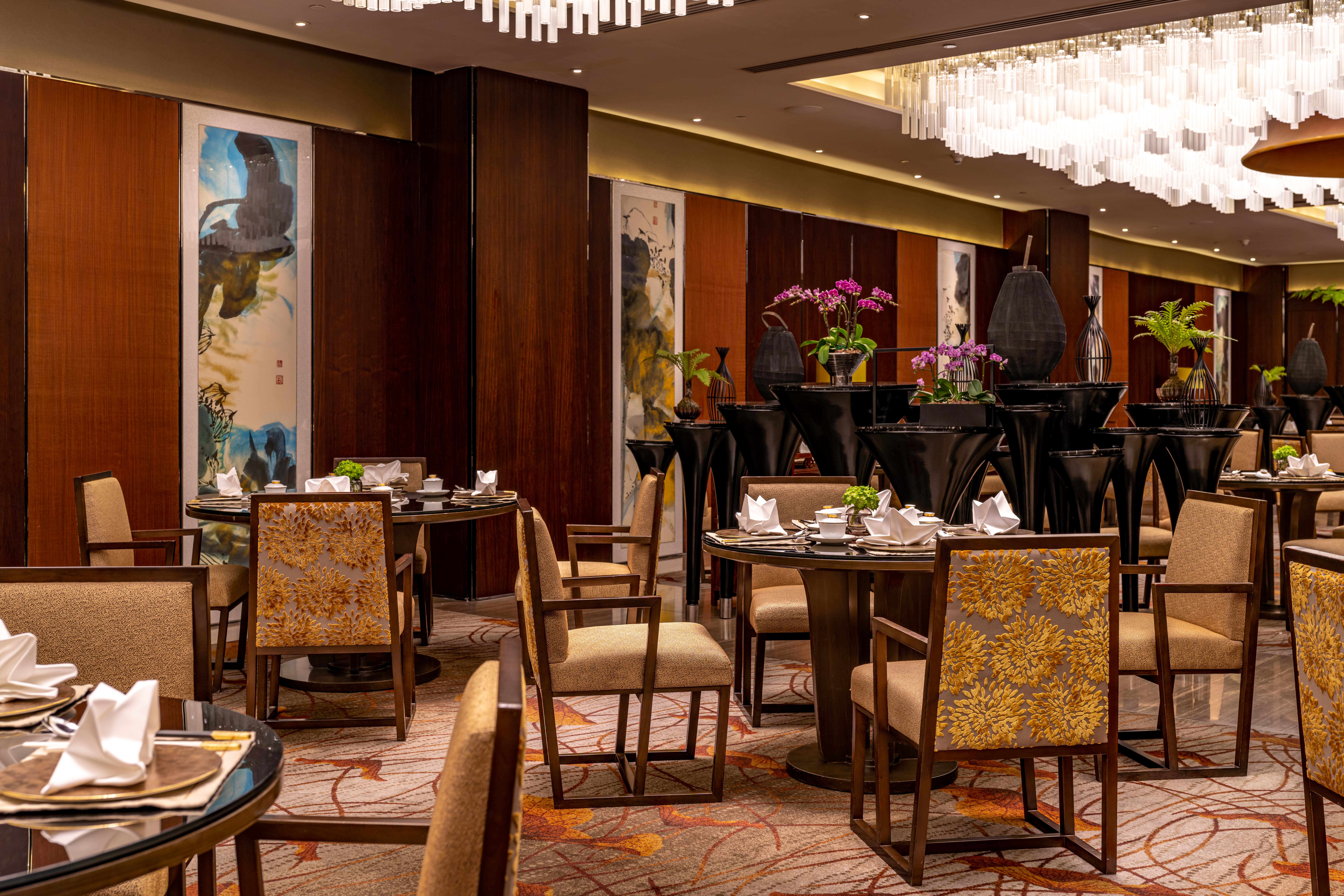

Menu
A colleague at the hotel had inquired about any allergies and interests. This meant that a special menu had been prepared for me, emphasizing some of the restaurant’s specialties, as well as some favorites for this chili pepper lover:
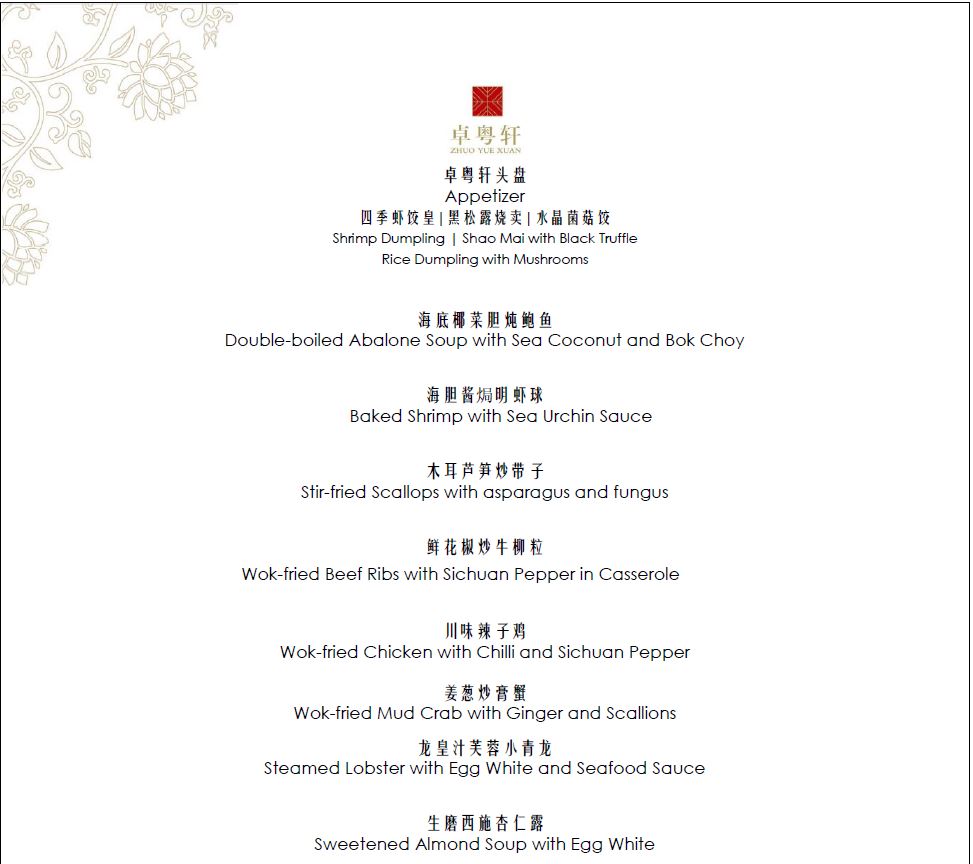
For those less familiar with Cantonese cooking, it is more about simpler, lighter flavors, and not spicy dishes. If you’d like to review the standard menu, this will help; it’s not so easy on the eyes, but it does make me want to try nearly everything.
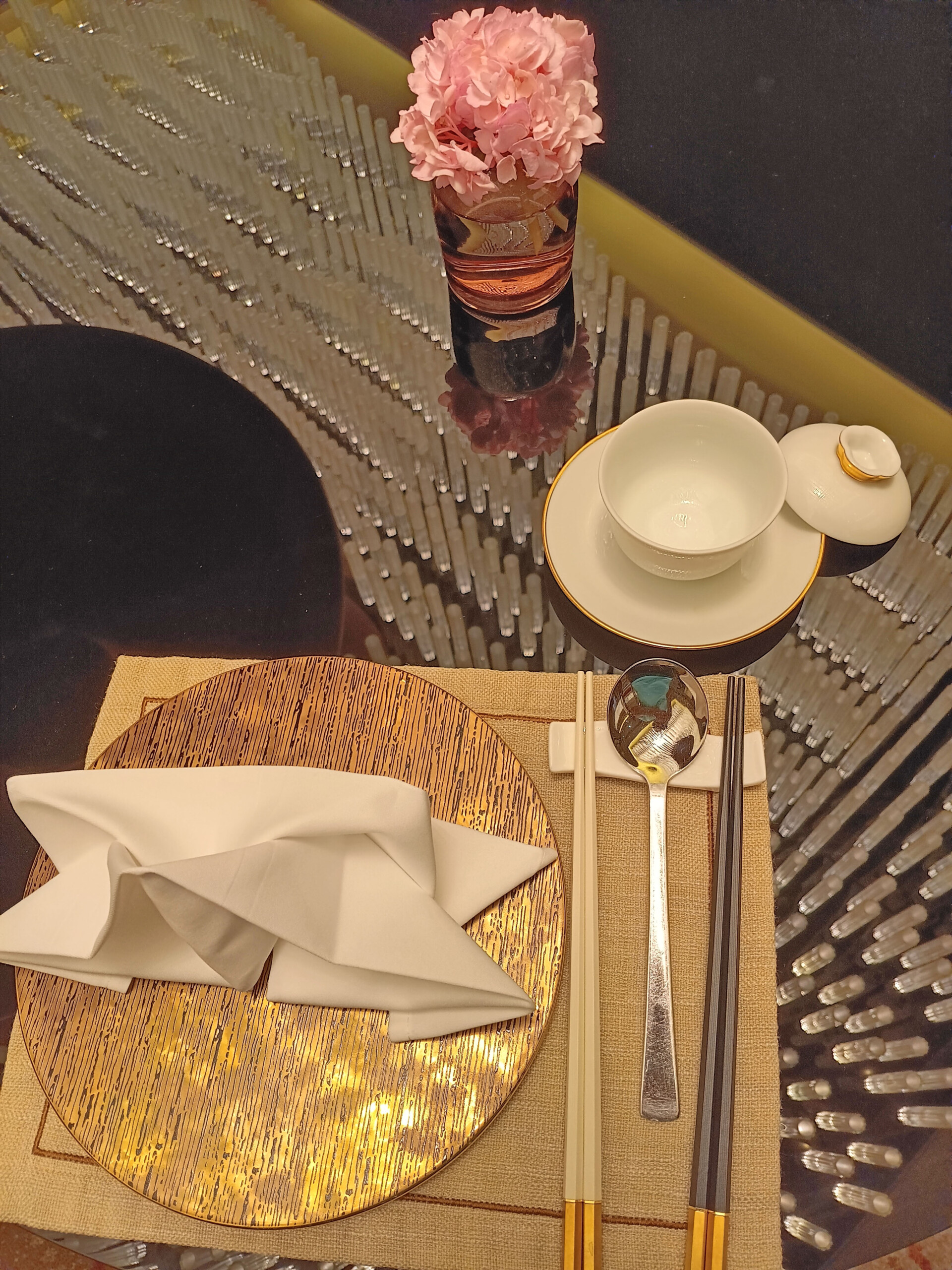
Where shall we start?
How about with an amuse-bouche?
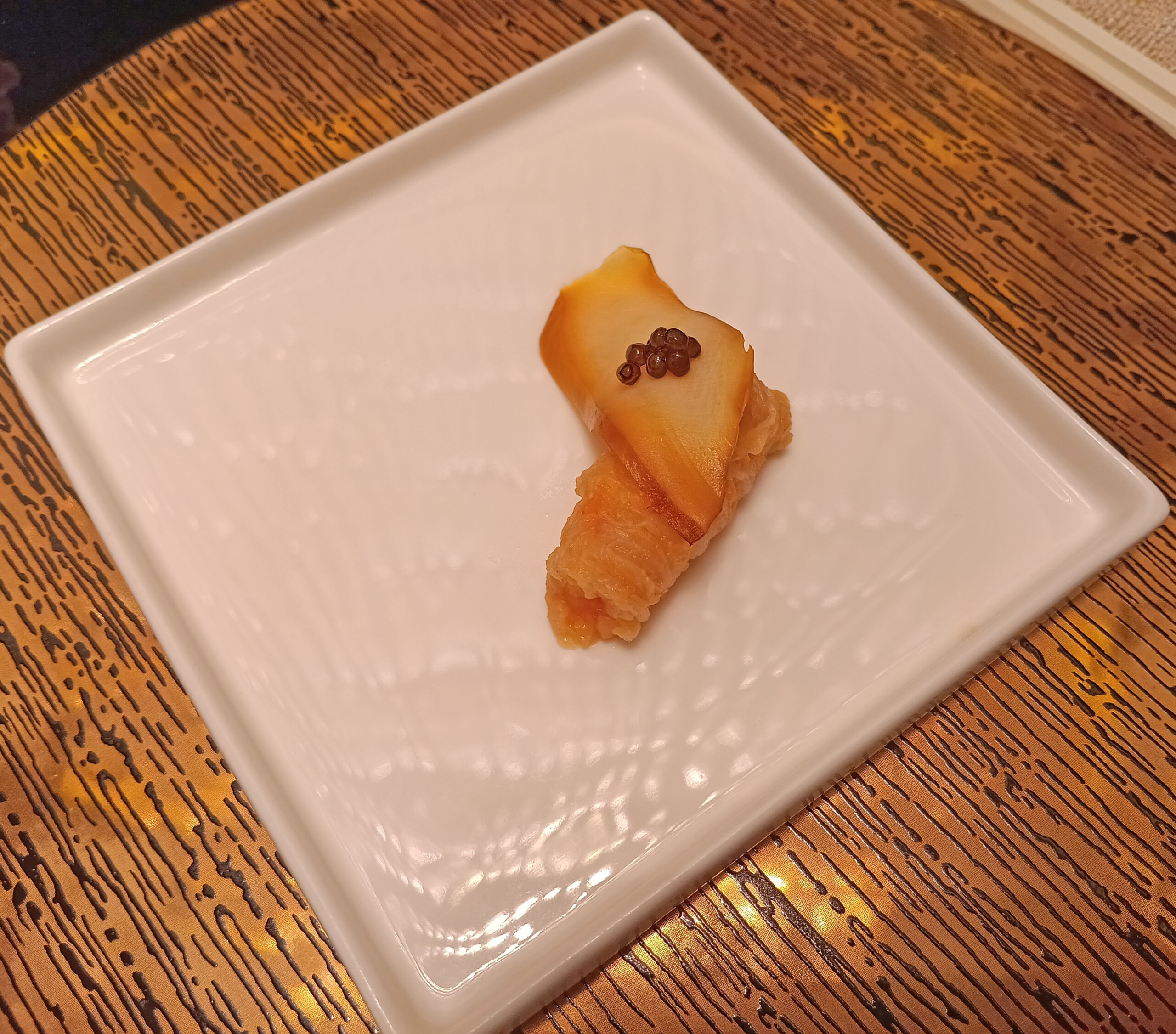
Ironically, this is the only dish that isn’t listed on the above menu. But it was a pickle with a slice of sashimi and caviar, intended to 开胃 (kāiwèi), or whet the appetite. The kimchi was rather sweet for me, but it did get me curious for the rest of my lunch!
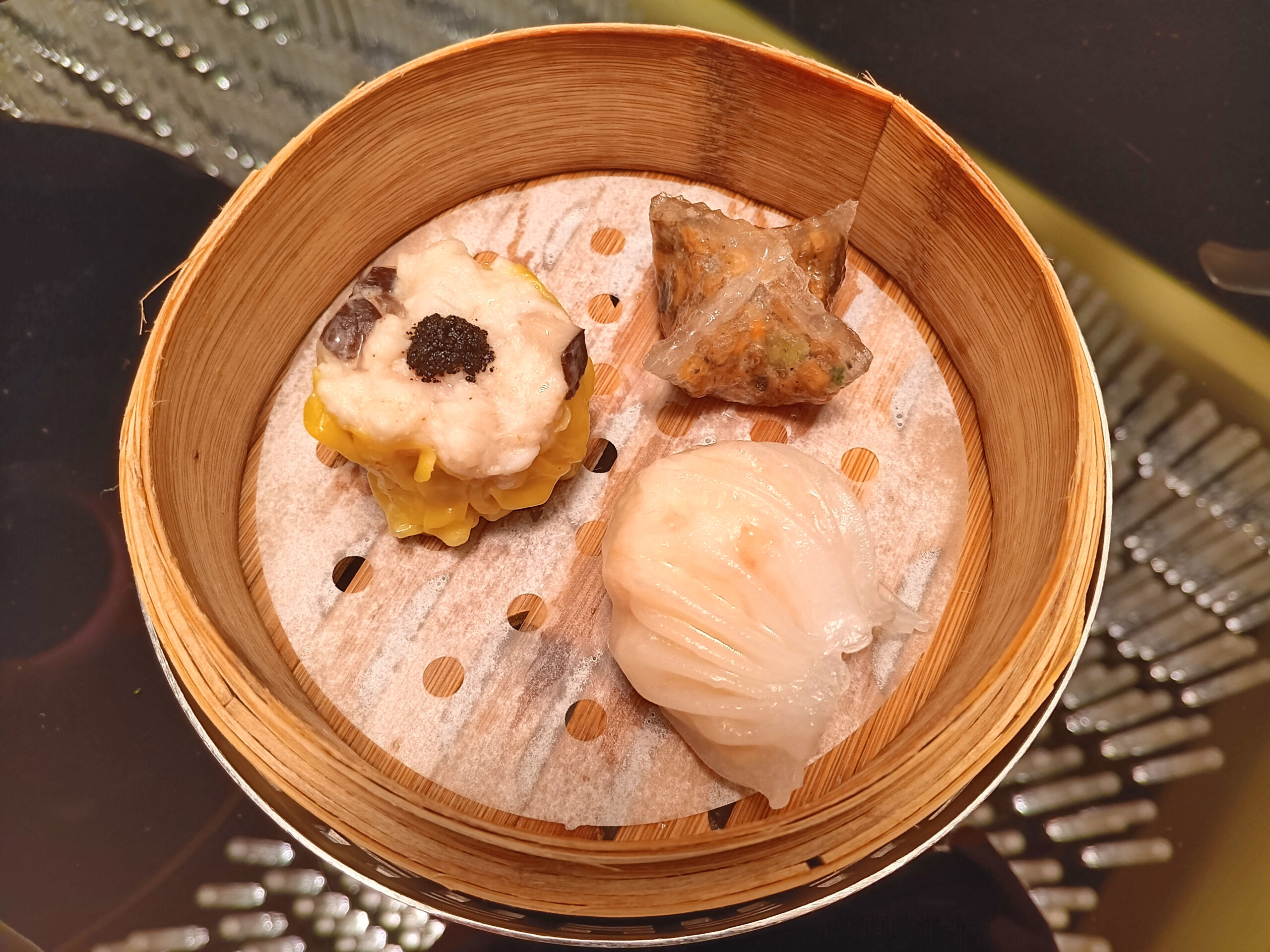
Historically, dim sum has been the only aspect of Cantonese food I’ve enjoyed. Why? I like aggressive flavors, hence the proclivity for chilies and ginger. But dim sum, with its countless choices, is a heavy hitter in my book.
The Four Seasons Shenzhen restaurant versions, with shrimp, black truffle, and mushrooms, were all delicious. If a dim sum place only offered these three options, I’d be all-in … given a strong tea menu, too.
Speaking of which….
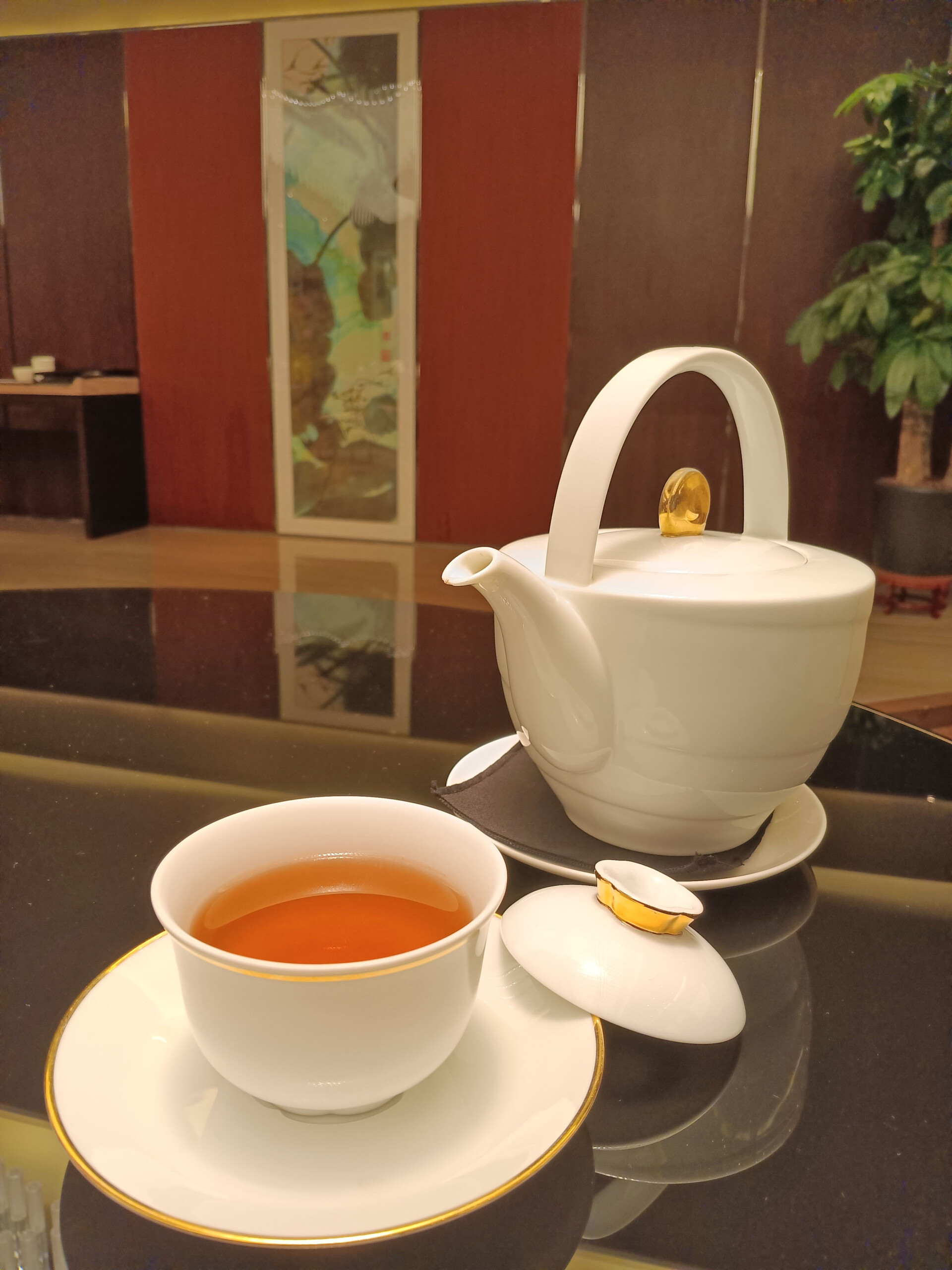
I ordered Pu’er tea. I confess, this type actually hails from Yunnan province, but it’s one of my go-tos. Other options included green, black, and jasmine tea.
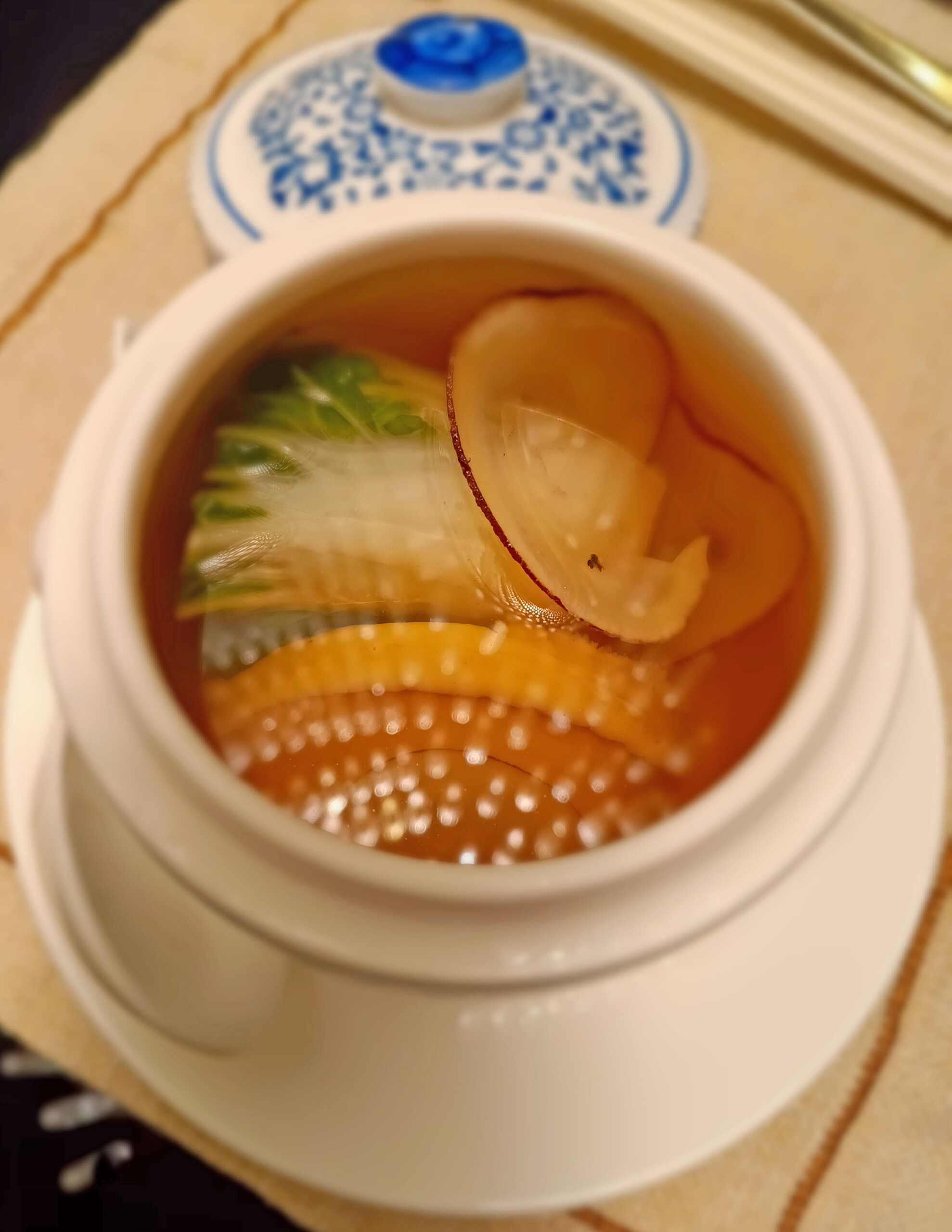
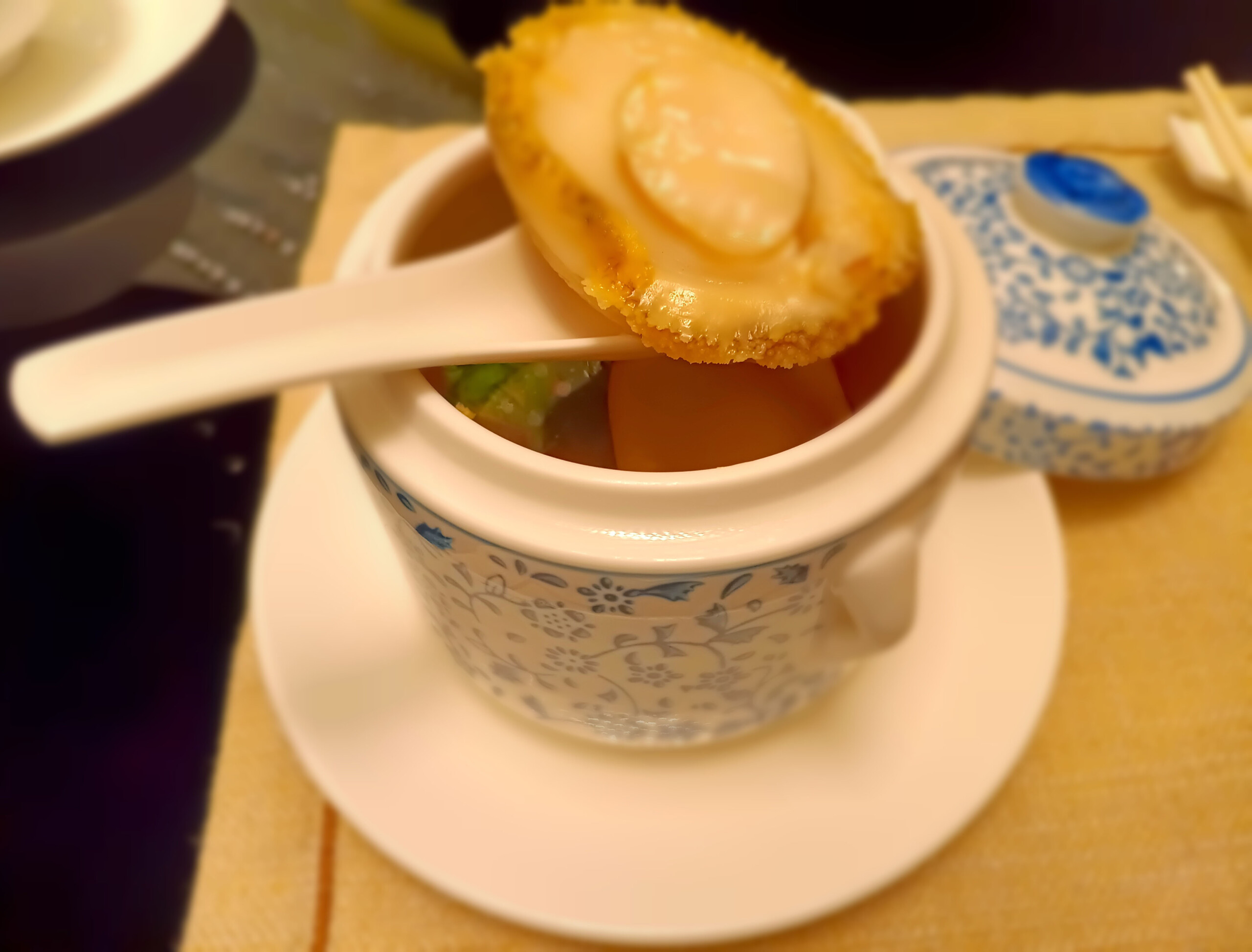
Another prominent feature of a Cantonese kitchen is having lots of seafood around. After all, Guangdong province borders the South China Sea.
I dig all seafood, but abalone has typically been rather dull for me. Nevertheless, this soup had a mild flavor, so as to emphasize the prized mollusk. It was good, but not terribly exciting for my taste buds.
Tangentially, I liked that the soup receptacle was from Jingdezhen, China’s ceramics capital.

Now we’re back to a string of excellent plates.
First up was baked shrimp with sea urchin sauce, placed atop watermelon rings. The sauce was outstanding, albeit rich. That’s where the watermelon came in, to help diminish the heaviness of the main attraction.

Quality, quality stuff here.
Tender cubes of meat with a melt-in-the-mouth texture. Sichuan peppercorns and Hunan red chilies augmented the dish to tie for first place, along with the baked shrimp and the dim sum.
You probably guessed that this isn’t representative of Cantonese food, but absolutely is something that’d I’d order everyday.
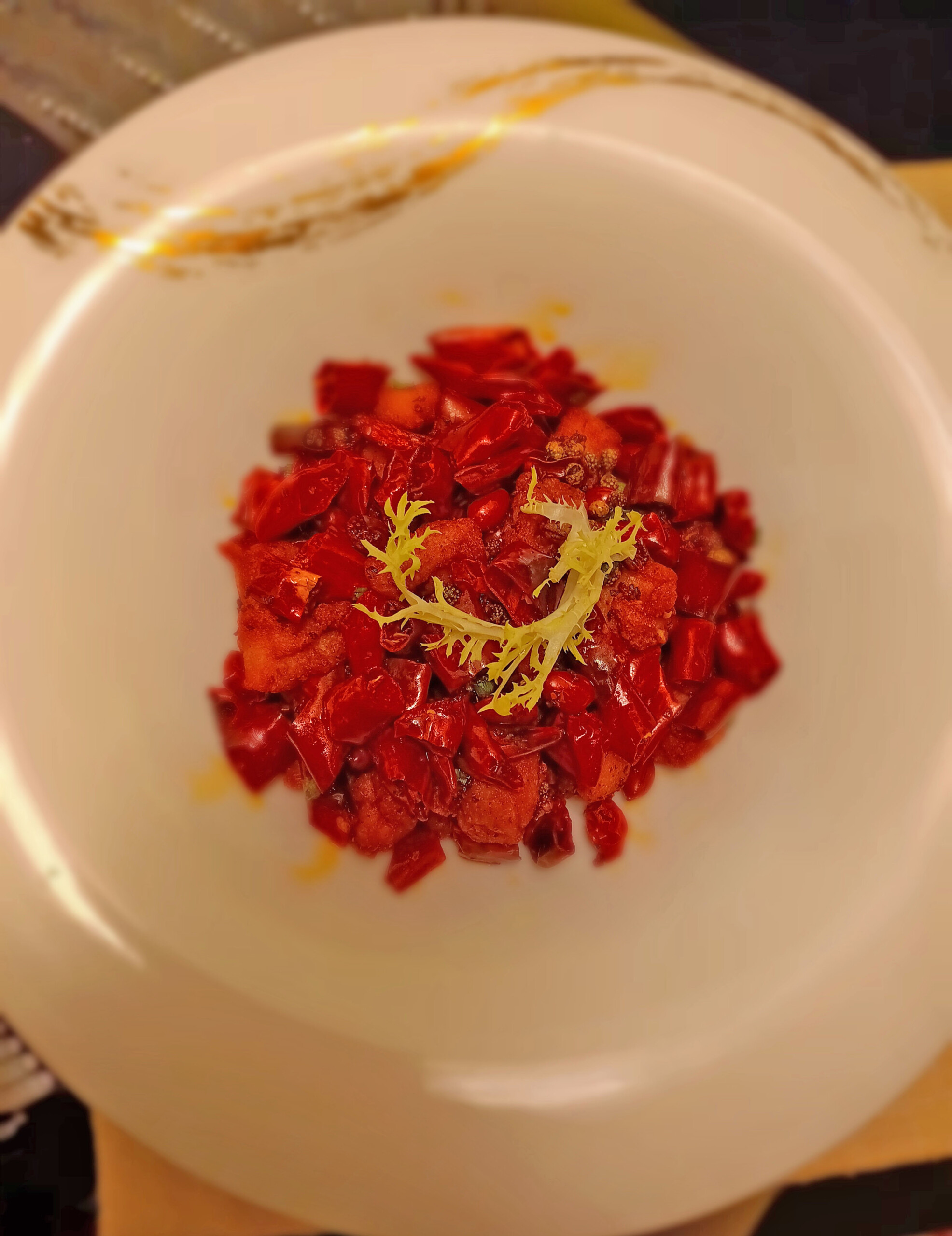
Firstly, I apologize for having gotten tilt-shift happy with my photography.
In any event, 辣子鸡 (làzijī) is basically the opposite of Cantonese cooking. It’s popcorn chicken (small pieces of fried chicken) with red peppers. Lots and lots of red peppers.
I generally try to avoid fried things, but have an undeniable weakness for fried chicken from this part of the world. The chilies helped cut the greasiness, as did the slight chili seasoning embedded in the chicken.
Very tasty.
To take a slight break from writing about the eats, I’d like to compliment the Four Season Shenzhen restaurant staff now. Most of the Zhuo Yue Xuan employees seemed helpful; in particular, I’d like to shout-out Miki Pan and Rebecca Wang. They kept my tea cup filled, and tended to my ridiculous queries about adding more chilies to things.
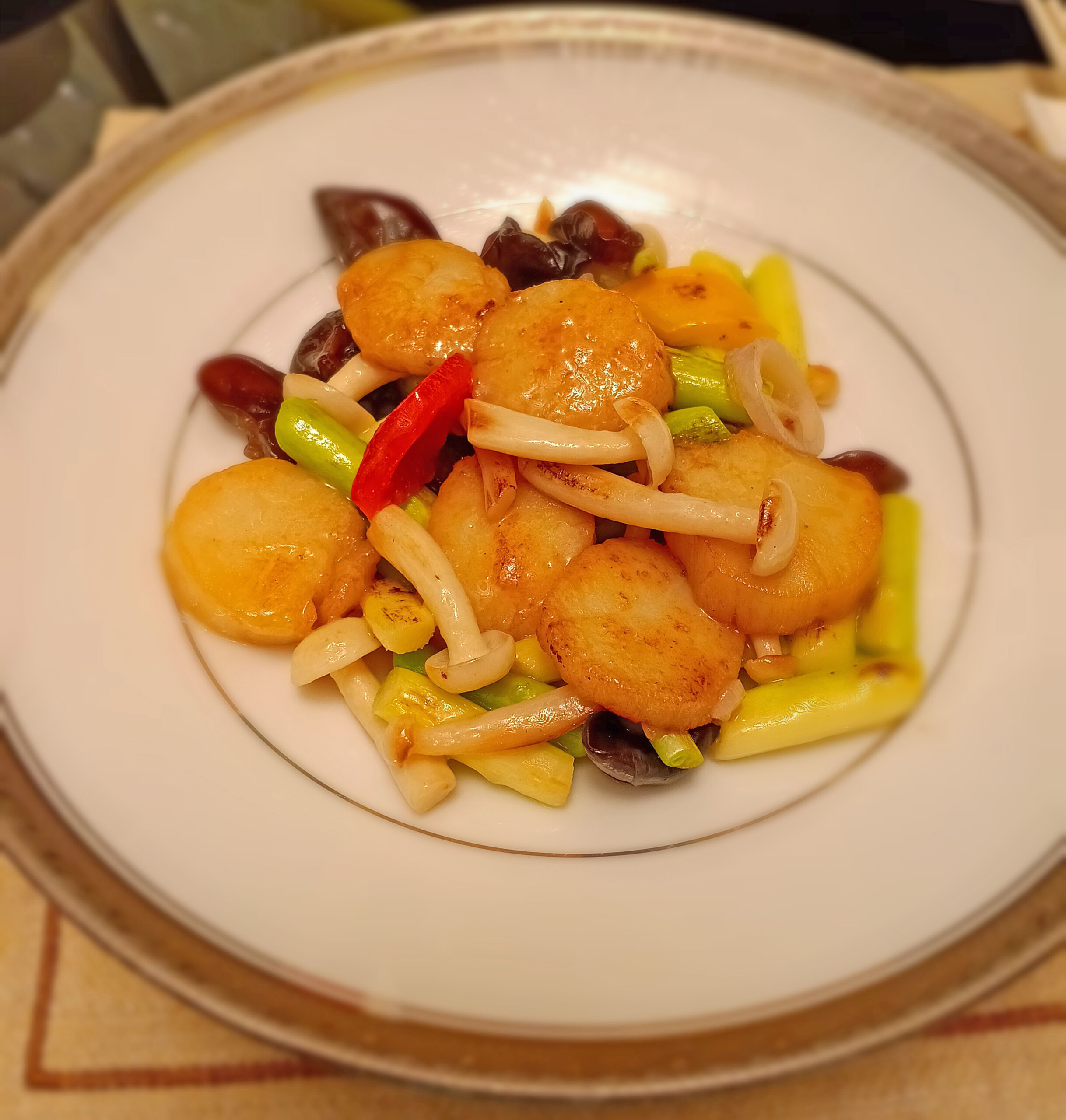
In anticipation of your probable question, yes, I was quite full by this point.
Oh, well.
The scallops were slightly oily, but I heartily welcomed vegetables. This dish was slightly monotonous.
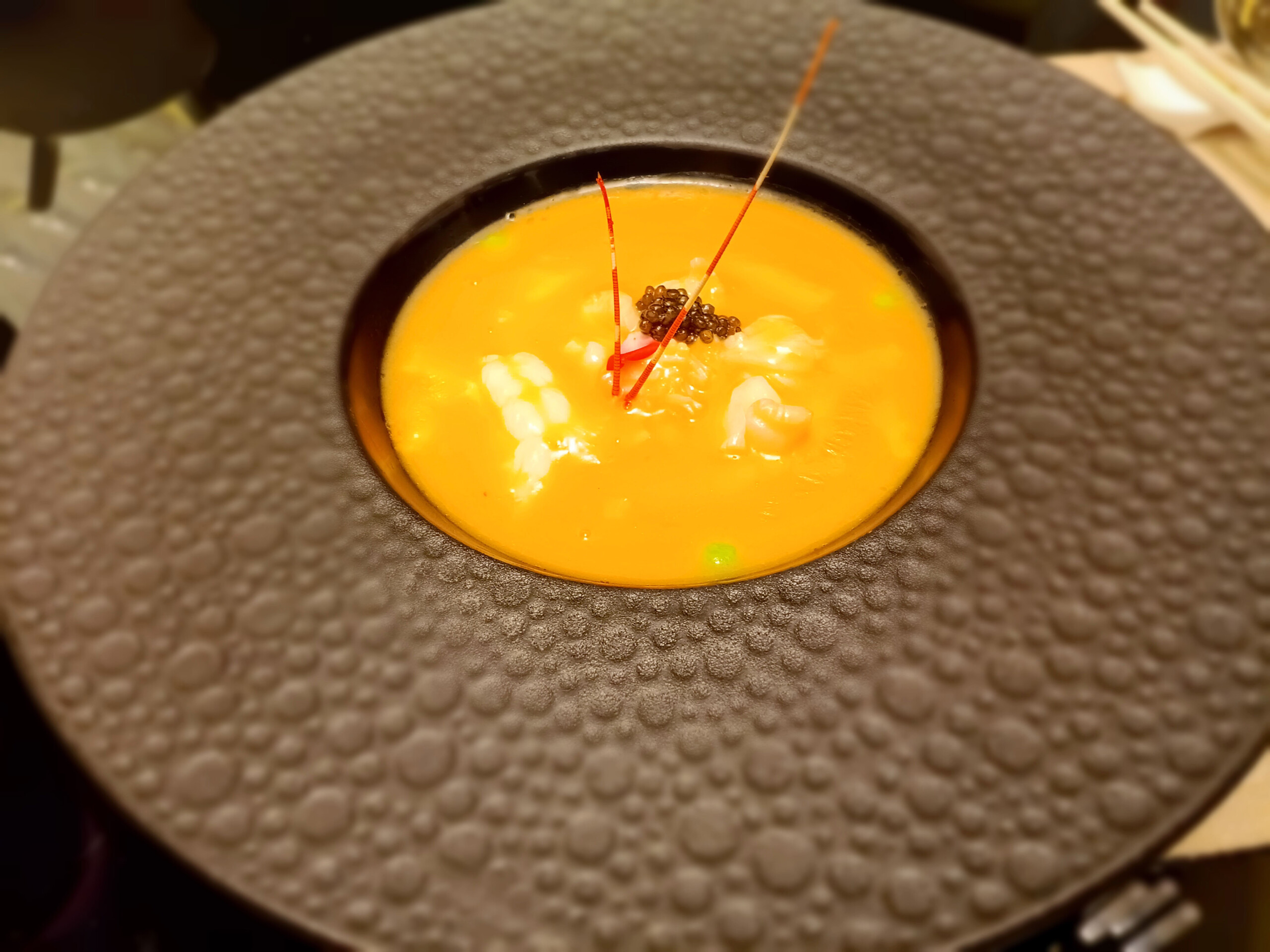
Velvety egg whites and a tangy sauce proved to be an unexpected complement to the expertly steamed lobster.
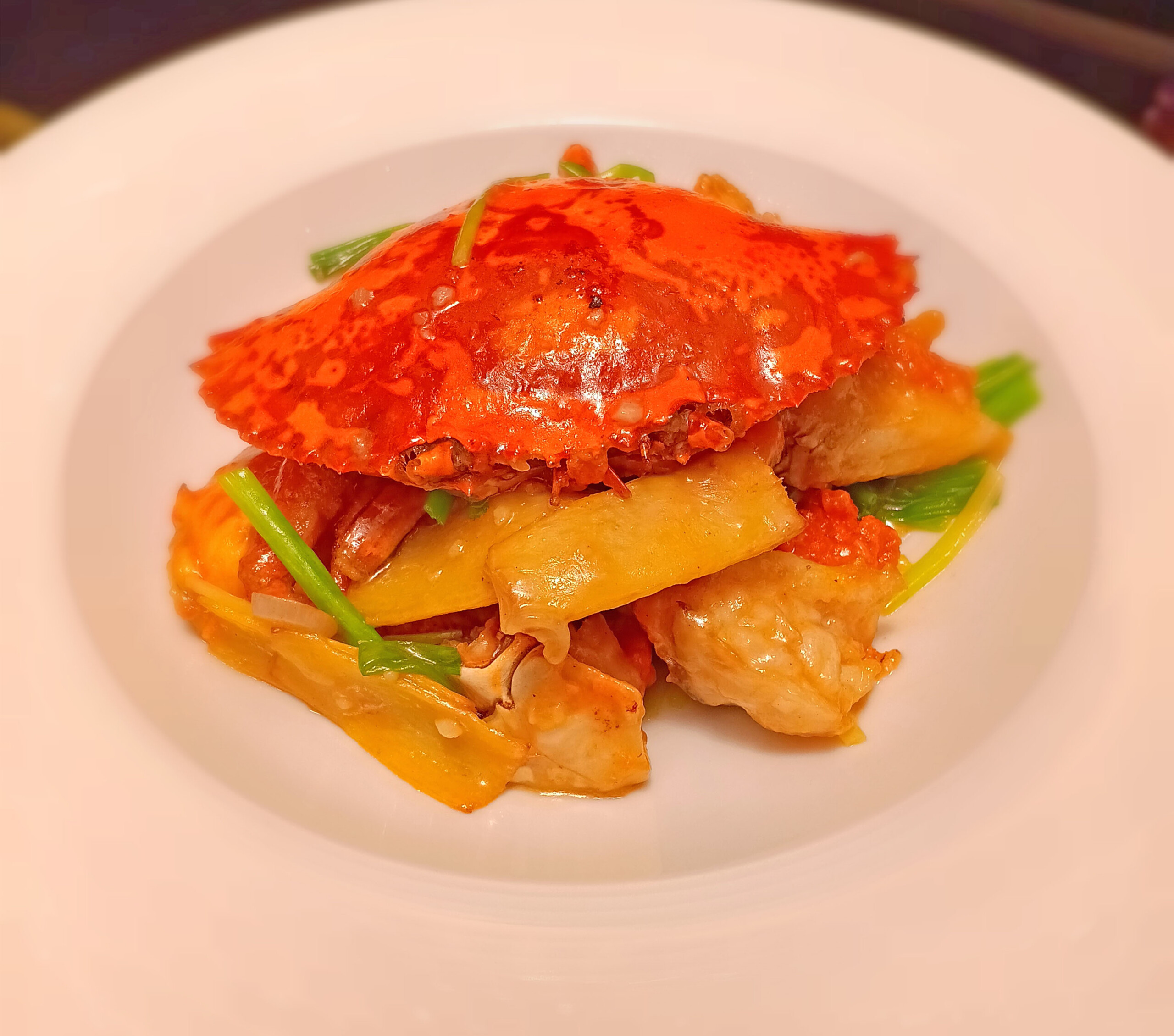
The mud crab with ginger and scallions didn’t have too much of a distinct flavor. Again, I think this speaks to the lightness of Cantonese dishes. If you do order this, I suggest trying it with the orangey crab roe, which happened to be hiding inside of the carapace.
Dessert
I failed to convince the waitstaff that I didn’t want dessert. Luckily, they chose a couple of plates that wouldn’t put me further over the top.
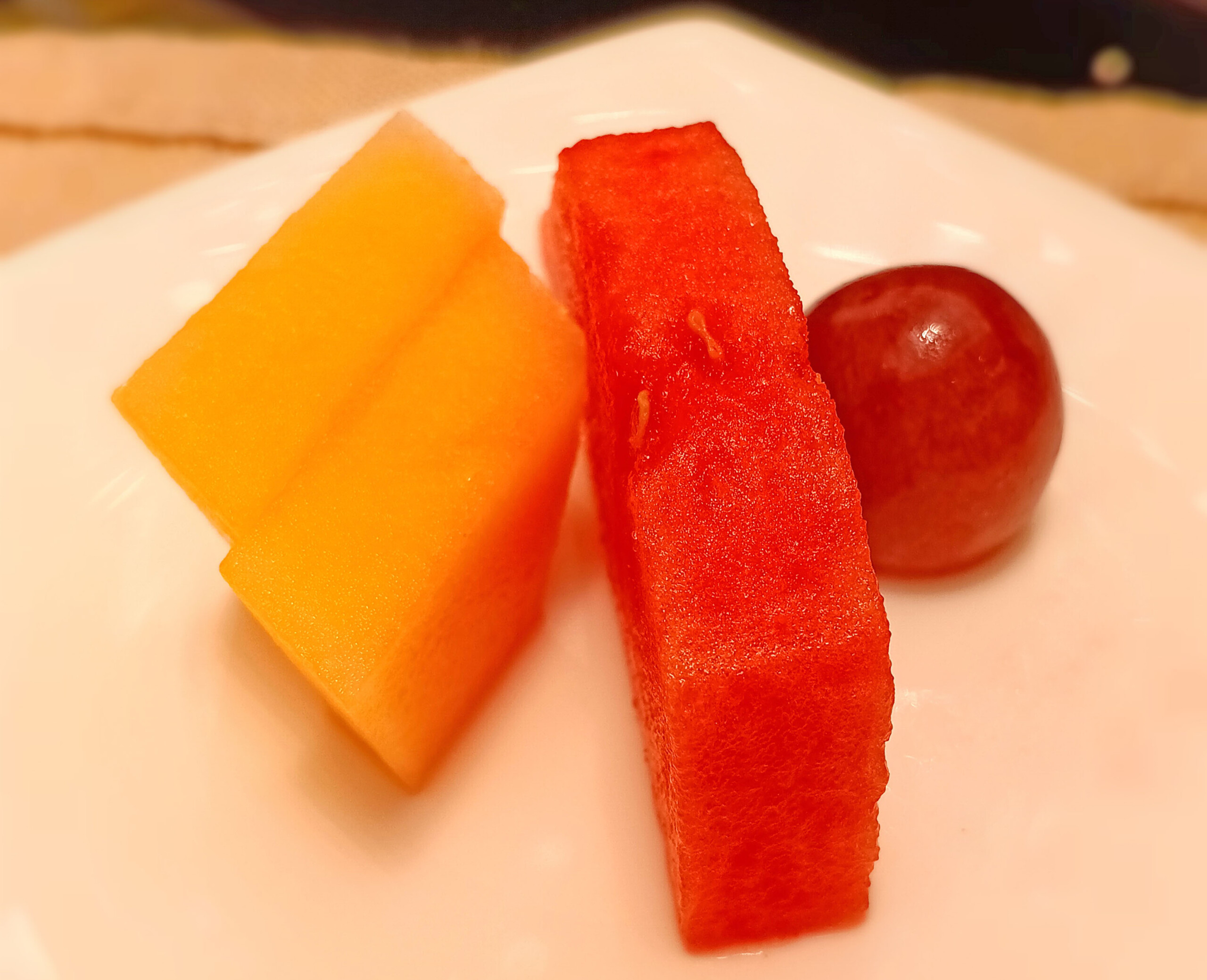
Phew! Just a few pieces of fresh fruit.
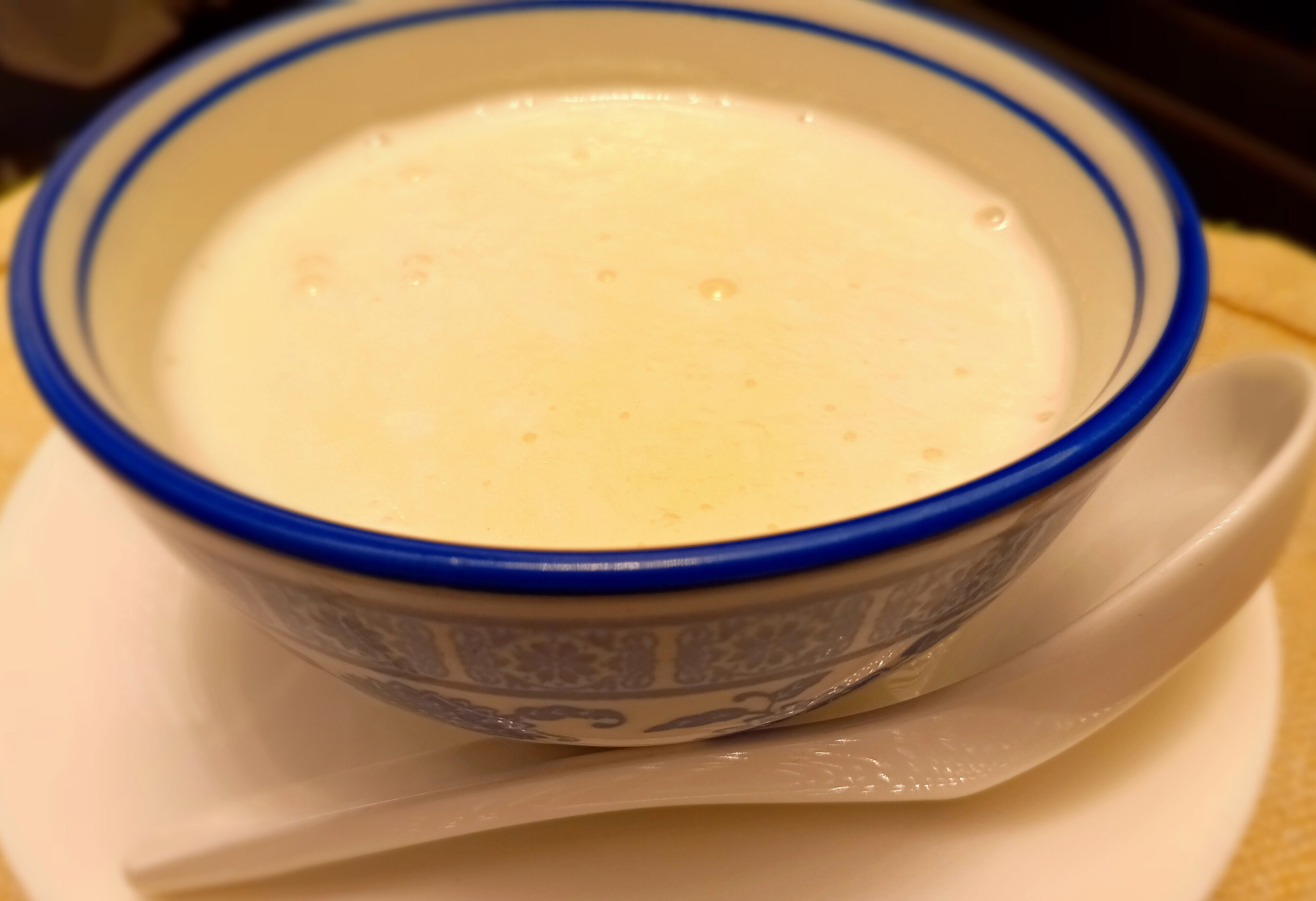
Almond soup (杏仁露 xìngrénlù) is a classic after-dinner treat in Guangdong.
This version wasn’t so sweet, likely due to the presence of egg whites.
It was however, a nice way to end a delectable feast at the Four Seasons Shenzhen restaurant Zhuo Yue Xuan.

Leave a Reply